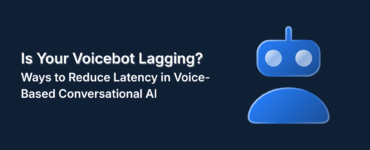The area where NLP and generative AI converge is growing. Grand View Research recently released a report projecting that the global NLP market will reach USD 43.11 billion by 2028, with a compound annual growth rate (CAGR) of 20.4% from 2023 to 2028. Increased funding for AI research, the growing use of chatbots with AI capabilities across businesses, and the amount of unstructured data generated are the leading causes of this exponential expansion.
A key component of artificial intelligence has been natural language processing (NLP), which attempts to close the gap between computer comprehension and human language. This topic has seen a revolution in recent years with the introduction of Generative AI, which allows machines to produce and understand human-like writing. The combination of Natural Language Processing (NLP) with Generative Artificial Intelligence (AI) has made notable progress in several areas, notably chatbots.
Understanding Generative AI and NLP
Generative AI
Generative AI, a subset of artificial intelligence, focuses on creating original content. It achieves this by extracting patterns from existing data to generate similar text, images, and audio content. This process often involves using advanced techniques such as Generative Adversarial Networks (GANs) and Variational Autoencoders (VAEs). GANs are a type of neural network that learns to generate new data with the help of a discriminator network that provides feedback. VAEs, on the other hand, are a type of generative model that learns to generate new data by learning the underlying distribution of the data. These techniques are crucial in generating new, realistic data.
Natural Language Processing (NLP)
NLP is an area of artificial intelligence that studies how computers use language. It includes various activities, including machine translation, sentiment analysis, and text analysis. In essence, it’s about giving computers the ability to comprehend, translate, and produce human language.
The Convergence of Generative AI and NLP
The intersection of Generative AI and NLP has led to groundbreaking developments, sparking excitement about the future of AI.
Text Generation
Content Creation: Generative AI can produce various text types, including plays, poems, and blog entries. This has ramifications for journalism, creative writing, and content marketing.
Language Translation: Generative AI can produce exact and fluid translations by learning from large volumes of multilingual text.
Code Generation: AI can help developers by producing complete programs or just snippets of code based on descriptions in natural language.
Virtual assistants and chatbots
Conversational Skills: Thanks to generative AI, chatbots can now have more casual and human-like discussions. They can comprehend complicated questions, give pertinent answers, and display personality qualities.
Personalization: AI may create a more customized experience by adjusting responses based on individual preferences by evaluating user data.
Contextual Understanding: Through generative artificial intelligence (AI), chatbots can retain context during a discussion, resulting in more meaningful and cogent exchanges.
Improved Sentiment Analysis and Opinion Mining
Accuracy: Generative AI can produce artificial language with particular sentiments, which aids in the more efficient training of sentiment analysis models.
Understanding Nuances: AI can more accurately identify delicate emotions and viewpoints conveyed in text by grasping the nuances of language.
Text Summarization
Enhanced Coherence: The sense and coherence of the original text can be preserved in succinct summaries produced using generative AI.
Customization: Summaries provide flexibility in how information is presented by being adapted to various audiences or objectives.
Obstacles and Things to Think About
Although generative AI in NLP has enormous potential, there are obstacles to be solved:
Bias: AI models may produce unfair or biased results if they inherit biases from the training data.
Misinformation: Deepfakes and other false information can be disseminated through the application of generative AI.
Ethical Implications: Data privacy and accountability are two moral issues brought up by the application of AI in delicate fields like healthcare and finance.
The Prospects for NLP and Generative AI
Exciting opportunities lie ahead in the convergence of NLP and generative AI. We anticipate significant advancements in hyper-realistic text generation, multilingual chatbots, personalized learning, and creative applications. This potential for growth and innovation should inspire optimism and excitement about the future of AI.
Hyper-realistic Text Generation: AI models that can produce text identical to human information.
Multilingual Chatbots: AI-powered chatbots that can converse fluently in several languages are known as multilingual chatbots.
Personalized Learning: AI-powered instructors that adjust to each student’s unique learning preferences and speed.
Creative Applications: AI can help writers, singers, and artists develop fresh concepts and materials.
Conclusion
The convergence of NLP and gen AI marks a new era in human-computer interaction, a transformation that reshapes businesses and enhances content development. As technology continues to evolve, we can look forward to increasingly inventive and sophisticated applications that will shape the future of human-machine communication, inspiring optimism and a sense of wonder about the potential of AI.
We can harness the full potential of gen AI and NLP by addressing obstacles and ethical issues. This will pave the way for machines to understand and respond to human language in a meaningful and beneficial way. This reassurance should instill confidence in the responsible development and use of AI, ensuring a positive and ethical future for AI.




